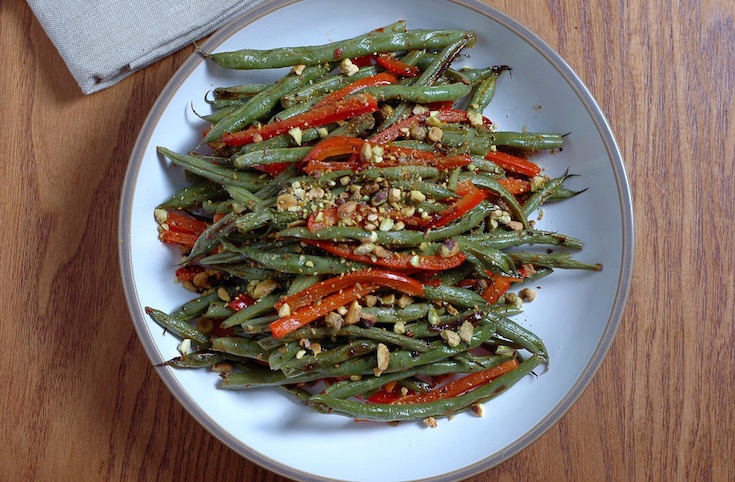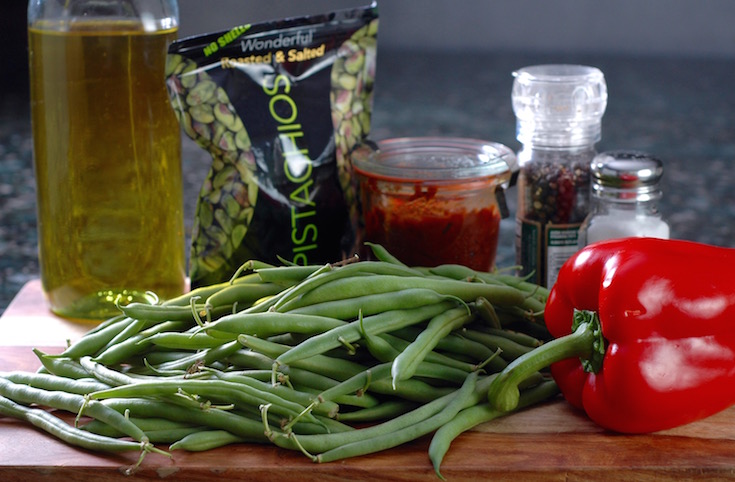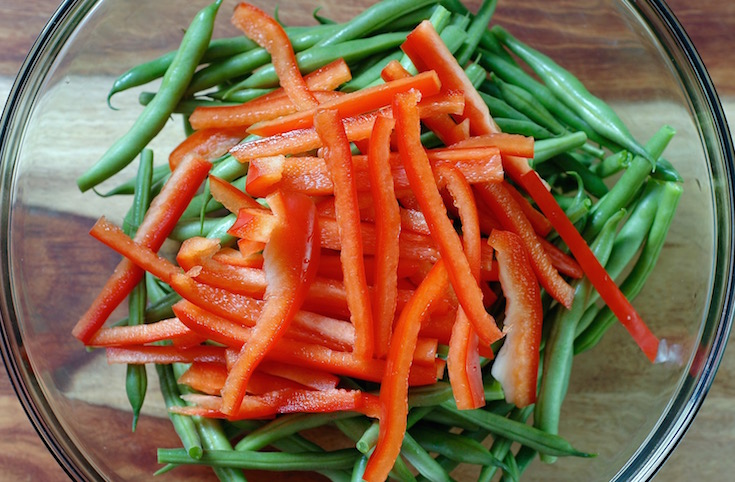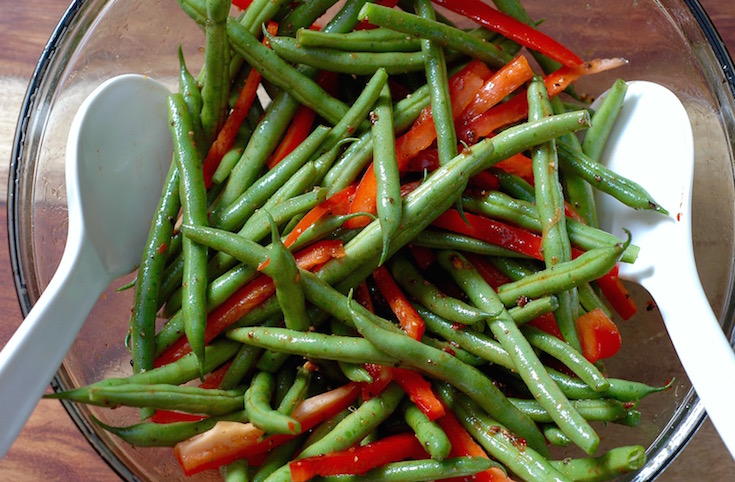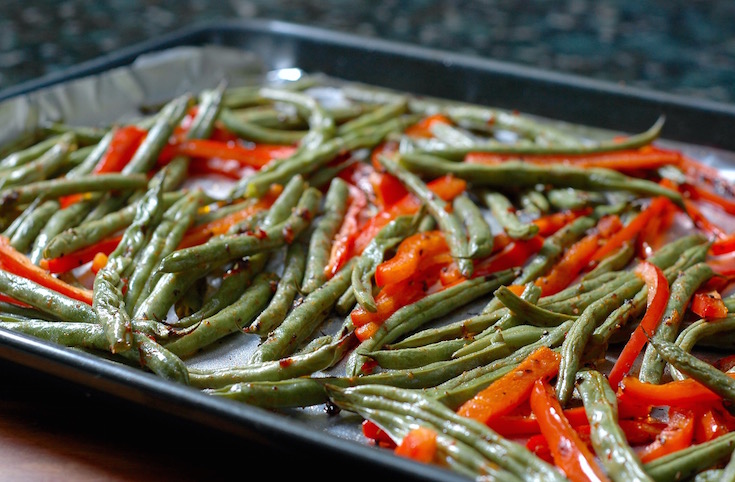Have you ever wondered why some cuisines feature spices more prominently than others?
I think of this question whenever I’m eating at the home of my mother-in-law, who was born and raised in the former Soviet Union. Dinner at her house nearly always includes traditional family favorites such as pelmeni (a type of stuffed pasta similar to ravioli), salads made with various root vegetables (potatoes, carrots, and beets, for example) in a mayo or sour cream-based dressing, chicken cutlets (patties of ground chicken bound with egg and fried in oil) and smoked and preserved fish, all seasoned primarily with salt, some pepper, and occasionally a few herbs such as dill and parsley. But spices such as paprika, nutmeg, vanilla, cardamom, and cumin? Never heard of ‘em!
In contrast, other cuisines that I love are practically defined by their reliance on specific, often indigenous spices. True Mexican food (not Tex-Mex) is spiked with chiles, both fresh and dried, as well as cinnamon. Thai cuisine is redolent with lemongrass, galangal (a root related to ginger), and Thai bird chiles. Star anise, ginger, and Sichuan peppercorns shine in the regional cuisine of China’s Sichuan province.
But it is Indian food that features the greatest use of spices. Cuisines from the Indian Subcontinent are bursting with the likes of amchur (a powder made from dried unripe mangos), cardamom, chile, cinnamon, cloves, cumin, coriander, fennel, fenugreek, nutmeg, tamarind, turmeric, and the list goes on.
I’ve always assumed that the level of a cuisine’s spiciness is largely the result of climate. Most spices grow best in hot, humid environments, so it’s not surprising that tropical cuisines (did I mention Indian food?) tend to be spicier while the cuisines of colder, more northerly countries (Russia, for example) are less so.
Other explanations for why spices are used more frequently in cuisines indigenous to hotter climates are that they help food remain fresher longer due to their anti-microbial properties and can mask the smell and taste of food that has, unfortunately, succumbed to spoilage. And some, such as chiles, are known to provide a cooling effect by increasing our tendency to, um, sweat.
All of these explanations seem perfectly reasonable, but in my view the best reason to use spices in cooking is what they bring to the proverbial dinner table. Spices can enliven a dish by adding unique flavors and colors that can also complement the other ingredients. Where would apples be without the earthy sweetness of cinnamon or curry without the golden yellow of turmeric?
Spicing your food is also a fantastic way to boost your intake of phytonutrients. These are substances that plants manufacture as protection against their own buggy and bacterial enemies and whose protective or disease preventive benefits may become available to humans who eat those plants. Phytonutrients also provide antioxidants, compounds that help prevent oxidative stress in the body. Left unchecked, oxidative stress can damage the body’s cells. Antioxidants, such as those found in spices, can help prevent this from occurring.
All of this is really a circuitous way of encouraging you to try my latest recipe: green beans and julienned pieces of sweet red pepper tossed with a mixture of olive oil, salt, pepper, and harissa paste and then quickly roasted in a hot oven, followed by a sprinkling of crushed pistachios. I developed this recipe on the fly a few weeks ago to use up some green beans, a red pepper, and my homemade harissa that were hanging out in my refrigerator. Yet despite its humble origin, the result was a revelation. The roasting concentrated the grassiness of the green beans and the sweetness of the red pepper, while the chile-rich harissa and crushed pistachios added unexpected heat and crunch. My family liked the dish so much that the next day I made a special trip to the grocery store to buy the ingredients to make a second batch.
So, give the dish a try. Not only is it quick and easy to make using ingredients that are easy to keep on hand in the fridge and pantry, it’s a terrific way to expand your repertoire of phytonutrient-rich spices. Oh, and did I say it is delicious?
Roasted Green Beans and Red Pepper with Harissa and Pistachios
Ingredients
1 pound (455 grams) green beans
1 sweet red pepper
2 tablespoons olive oil
1/4 teaspoon salt
1/2 teaspoon pepper
1-2 teaspoons harissa paste (store bought or homemade)
2 tablespoons pistachios, crushed
Directions
1. Prepare the green beans and red pepper: Preheat the oven to 400°F (200°C). While the oven is preheating, trim the green beans on both ends (unless they are very fresh, in which case you only need to trim the stem ends), and then wash and dry them. To julienne the pepper, cut off its top and bottom as close to the ends as possible, and then cut the body of the pepper in half vertically (top to bottom). Clean out the interior of each half by removing and discarding the ribs and seeds, and then place it face up on a cutting board. Julienne the halves by cutting them into long thin slices, with each slice having about the same width as a green bean. Cut off similar thickness pieces from the top and bottom as well, discarding the stem. Place the trimmed green beans and julienned pepper in a large bowl.
2. In a small bowl, mix together the olive oil, salt, pepper, and harissa paste. Pour the mixture over the green beans and red pepper and then toss the contents of the bowl until some oil and harissa paste coat each of the green beans and julienned pieces of pepper. Spread the vegetables on a half-sized sheet pan (about 18 x 13 inches or 46 x 33 centimeters) lined with parchment paper or nonstick foil. Roast in the preheated oven for 12 minutes.
3. After the vegetables have finished roasting, remove them from the oven and let cool for about 5 minutes. Serve immediately garnished with the crushed pistachios.
Copyright© A Busy Mom’s Kitchen
https://abusymomskitchen.com/2015/07/30/roasted-green-beans-and-red-pepper-with-harissa-and-pistachios/#more-1758


